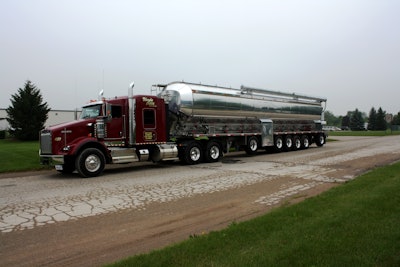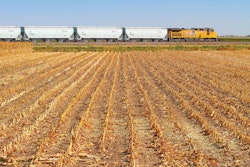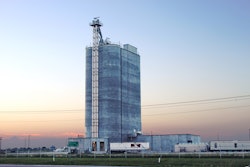
Companies running fully loaded trucks will gain new efficiencies with little downside if the Safe & Effective Transportation Act passes. John Runyon, executive director of the Coalition for Transportation Productivity, provided an overview of the act and its benefits for bulk haulers at the National Grain and Feed Association’s annual convention in March.
SETA calls for states to have the option to allow gross combined vehicle weights of 97,000 pounds for interstate highways as well as secondary roads, with the addition of a third axle for the trailer.
Currently, more than 90% of states allow heavier trucks to access some or all secondary roads, but federal regulations keep them off the interstates, where five-axle vehicles are limited to 80,000 pounds.
这个提议的关键是额外的轴the trailer. With it, overall weight per tire drops from 4,444 pounds/tire on a five-axle/80,000-pound tractor/trailer combination to 4,409 pounds/tire on the six-axle 97,000-pound combination.
Studies have shown that changes in braking distances are negligible, with 80,000-pound five-axle trucks stopping in 240 feet and the 97,000-pound six-axle truck stopping in 241 feet. The additional 17,000 pounds of gross weight requires more fuel, but is offset by the reduction in overall ton miles shipped.
Runyon cited a paper mill shipping 27 million pounds/week. This required 600 trucks at 80,000 pounds, but only 450 trucks grossing 97,000 pounds. Their per-week savings included 13,000 fewer gallons of diesel fuel consumed and 94,200 fewer miles driven, resulting in reduced wear on pavements and lessened exposure to accidents.
Runyon sees this added productivity being helpful to grain and feed operations running trucks that are loaded to 80,000 pounds, or who may be taking advantage of higher weight limits on state roads but running longer, more inefficient routes to stay off Interstate highways.





















